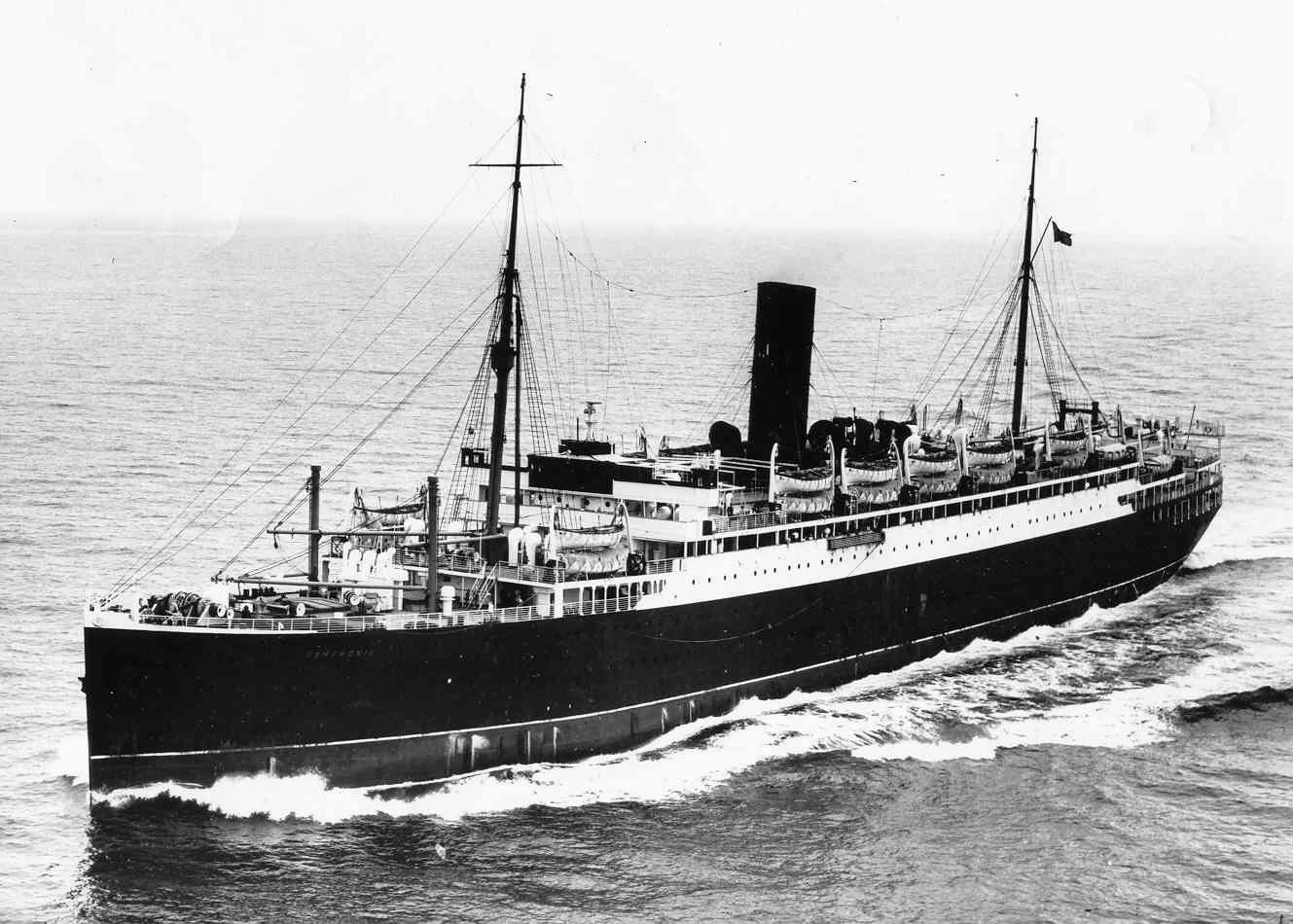RMS Cameronia
From Our Contribution
Remarks
When she first entered service, she had accommodation for 265 x 1st class, 370 x 2nd class and 1,100 x 3rd class passengers. Cameronia departed Glasgow on 11 May 1921 on her maiden voyage to Liverpool and New York. Cameronia underwent a refit in 1928 to correct her tendency to pitch heavily. In 1929, another refit saw her accommodation refitted to cabin/tourist class. She now had accommodation for 290 cabin class, 431 tourist class and 698 3rd class passengers. She was laid up on the Clyde in December 1934 and remained laid up until the autumn of 1935 when she entered service as a troop ship before resuming commercial operation.
She made eleven unescorted round trips from Glasgow – New York in the period to December 1940, when she was requisitioned for use as a troopship. Cameronia served in the Mediterranean as a Landing Ship Infantry during the war, taking part in the British-American invasion of French North Africa in November 1942. On 22 December 1942, Cameronia was hit by a torpedo dropped by a Junkers Ju 88 off Algiers, Algeria. A 26.8 m2 hole was blown in Cameronia's side and seventeen people were killed. Cameronia managed to reach the port of Bougie, Algeria, from where she was escorted at 5 knots (9.3 km/h) to Algiers. She then sailed to Gibraltar where temporary repairs were carried out, before she sailed to Glasgow for permanent repairs. Cameronia was the largest troopship that took part in Operation Overlord in June 1944. She served until the end of the war, when she was laid up.
In 1947, Cameronia was returned to service on trooping duties to Palestine before she was refitted by Barclay, Curle & Co Ltd, in 1948 giving her accommodation for 1,266 passengers in a single class. She was then used to transport people emigrating to Australia. In 1953, Cameronia was sold and renamed Empire Clyde before being scrapped at Newport, Monmouthshire in October 1957.

